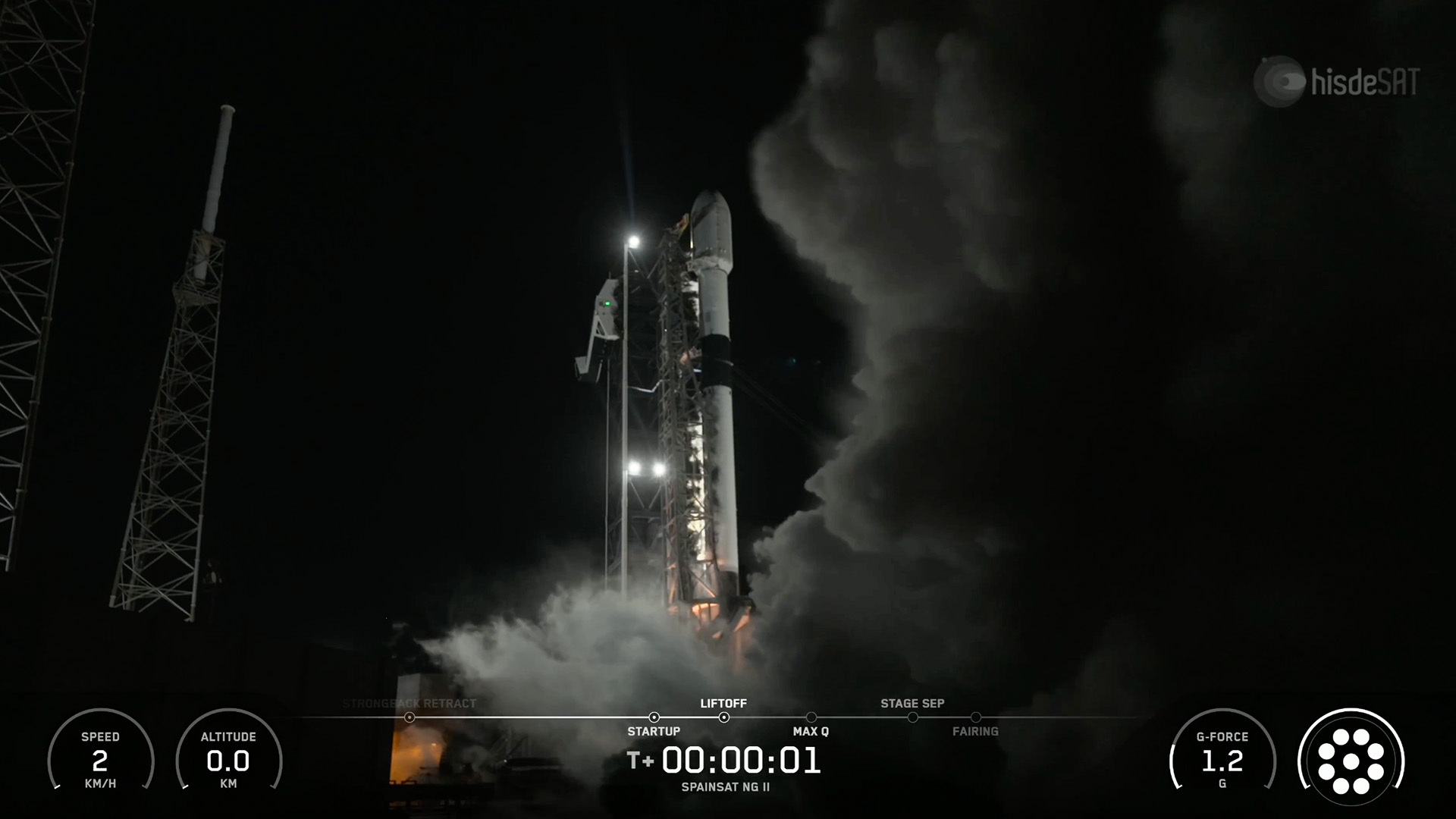SpaceX launches its record-breaking 139th mission of the year (video)
Liftoff of the Spainsat NG-2 satellite occurred at 9:30 p.m. ET today (Oct. 23).
SpaceX launched its record-setting 139th mission of the year today (Oct. 23).
A Falcon 9 rocket lifted off from Florida's Cape Canaveral Space Force Station today at 9:30 p.m. EDT (0130 GMT on Oct. 24), lofting the second and final satellite for the Spainsat Next Generation (NG) constellation.
The two Spainsat NG spacecraft will provide "military-grade secure communications to the Spanish Armed Forces and its partners," according to SatNews.

SpaceX also launched the first Spainsat NG satellite, which lifted off atop a Falcon 9 this past January.
If all goes to plan today, the Falcon 9's upper stage will deploy the Spainsat NG-2 satellite into a geosynchronous transfer orbit about 36 minutes after liftoff.
The rocket's first stage, meanwhile, did not come back to Earth for a safe touchdown today — a rarity these days for Falcon 9 missions. The booster was in expendable mode "due to the additional performance required to deliver this payload to orbit," SpaceX wrote in a mission description.
This mission was the 22nd for this booster, the company added.
Breaking space news, the latest updates on rocket launches, skywatching events and more!
Today's flight was the 139th of 2025 for SpaceX, setting a new mark for the company. SpaceX has now launched 134 Falcon 9 missions this year — also a record — and five suborbital test flights of its Starship megarocket.
In 2024, SpaceX performed 132 Falcon 9 flights, four Starship test launches and two liftoffs of its powerful Falcon Heavy rocket.
Editor's note: This story was updated at 9:45 p.m. ET on Oct. 23 with news of successful launch.
Join our Space Forums to keep talking space on the latest missions, night sky and more! And if you have a news tip, correction or comment, let us know at: community@space.com.

Michael Wall is a Senior Space Writer with Space.com and joined the team in 2010. He primarily covers exoplanets, spaceflight and military space, but has been known to dabble in the space art beat. His book about the search for alien life, "Out There," was published on Nov. 13, 2018. Before becoming a science writer, Michael worked as a herpetologist and wildlife biologist. He has a Ph.D. in evolutionary biology from the University of Sydney, Australia, a bachelor's degree from the University of Arizona, and a graduate certificate in science writing from the University of California, Santa Cruz. To find out what his latest project is, you can follow Michael on Twitter.
You must confirm your public display name before commenting
Please logout and then login again, you will then be prompted to enter your display name.
